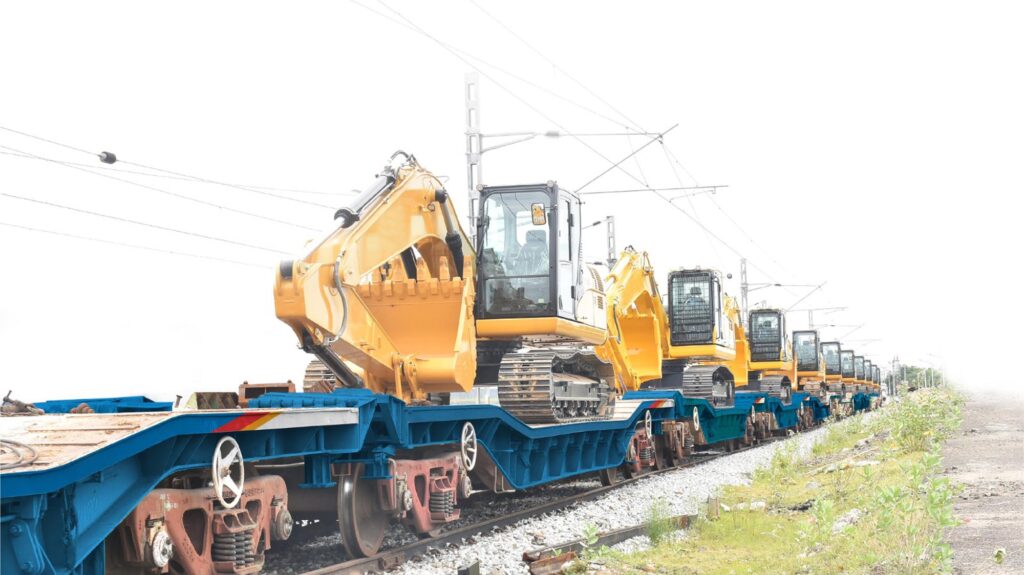By Nikhil Agarwal, President, CJ Darcl Logistics

Over the past two years, India’s logistics industry has undergone a remarkable transformation, driven largely by the launch of the National Logistics Policy (NLP) in September 2022. Together with the PM GatiShakti National Master Plan (NMP), these initiatives are creating a more efficient logistics landscape. While the NMP focuses on physical infrastructure, the NLP addresses “soft infrastructure” — streamlining processes, enhancing services, embracing digitization, and developing a skilled workforce. These efforts are reshaping the sector and solidifying its role as a key driver of India’s economic growth and global trade.
The NLP plays a vital role in India’s ambition to become a $7 trillion economy by 2030. By tackling key issues and leveraging technology, it is promoting a multimodal transport system and improving the overall business environment. A framework for business collaboration and a focus on innovation and sustainability are further propelling India’s long-term economic goals.
Tackling Long-Standing Challenges
Historically, India’s logistics sector faced significant challenges, including fragmented networks and outdated infrastructure, which inflated costs to 13-14% of GDP – well above the global average of 8-10%. This hampered India’s competitiveness in international markets. The NLP aims to lower these costs by creating a more integrated logistics network and optimizing operations, laying the groundwork for India’s rise as a major player in global trade.

Early signs of success are visible in the reduction of logistics costs and shortened transit times, achieved through improved synergy between road, rail, air, and waterways. These advancements, supported by enhanced connectivity and infrastructure, are increasing India’s participation in global trade.
Major Milestones in Logistics Transformation
Since its launch, the NLP has made notable strides in shaping India’s logistics landscape. A key focus has been reducing logistics costs and improving India’s Logistics Performance Index (LPI) rating. The seamless integration of multimodal transport—including roads, rail, air, and waterways — has improved supply chain visibility and efficiency nationwide. Infrastructure projects like Bharatmala and Sagarmala are creating national networks that facilitate smoother cargo movement.
The Unified Logistics Interface Platform (ULIP) has also been a transformative digital initiative, connecting 34 logistics-related systems across ministries for real-time tracking, digital documentation, and predictive analytics. With over 614 businesses registered on the platform, operational bottlenecks have been reduced, fostering better decision-making.
Collaborating for Success
One of the NLP’s major successes is fostering collaboration between the public and private sectors, leading to rapid infrastructure development and operational efficiency. Public-Private Partnerships (PPP) have been instrumental in establishing logistics parks, enhancing transportation networks, and modernizing the sector.
The policy’s emphasis on capacity building and skill development is also noteworthy. Training programs and certifications have helped address the demand for modernized logistics management practices, ensuring the workforce is prepared for the digital era.
The Investment Boom
The NLP, coupled with PM GatiShakti, has sparked a surge in investments in the logistics sector. Over INR 100 lakh crore (USD 1.3 trillion) has been committed to infrastructure projects such as multimodal logistics parks, designed to boost the efficiency of India’s transportation networks and reduce transit times. This investment is creating a globally competitive logistics network that meets international standards.
The policy’s structural reforms are opening up unprecedented business opportunities, and stakeholders are working together to realize India’s broader vision of **Viksit Bharat 2047**.
Facing Challenges Head-On
Despite the progress, challenges remain. The sector still relies heavily on road transport, and infrastructure gaps — particularly in rural areas — impede the smooth movement of goods. Digital integration across such a vast and diverse country is also complex, and there is a pressing need for continuous upskilling of the workforce to match technological advancements.
However, the Department for Promotion of Industry and Internal Trade (DPIIT) is actively addressing these issues. Regular inter-ministerial meetings, workshops, and collaborations with industry stakeholders are helping sustain the momentum of the NLP’s implementation. Initiatives like the Services Improvement Group (SIG) and the E-Logs portal are playing key roles in resolving bottlenecks and improving service quality.
Looking Ahead: Sustainability and Green Logistics
As we look to the future, the NLP will increasingly focus on sustainability and green logistics. Initiatives promoting electric vehicles, fuel-efficient transport, and renewable energy in warehousing operations will be key in reducing the carbon footprint of India’s logistics sector. These efforts will not only support environmental goals but also enhance operational efficiency.
Conclusion: India’s Journey to Becoming a Global Logistics Hub
The National Logistics Policy and PM GatiShakti have laid a strong foundation for India’s logistics sector to emerge as a global powerhouse. The policy is revolutionizing how goods are transported across the country by emphasizing efficiency, sustainability, and cost reduction. The integration of multimodal connectivity, digital transformation, and a robust public-private partnership model has positioned India as a growing force in global trade.
The full impact of the NLP will continue to unfold over the coming years as ongoing investments in infrastructure, technology, and human resource development take shape. The logistics sector must remain adaptable, embracing trends in automation, digitalization, and green logistics. With a focus on innovation and sustainability, the NLP is set to propel India toward its goal of becoming a $7 trillion economy by 2030, solidifying its role as a key player in the global logistics arena.